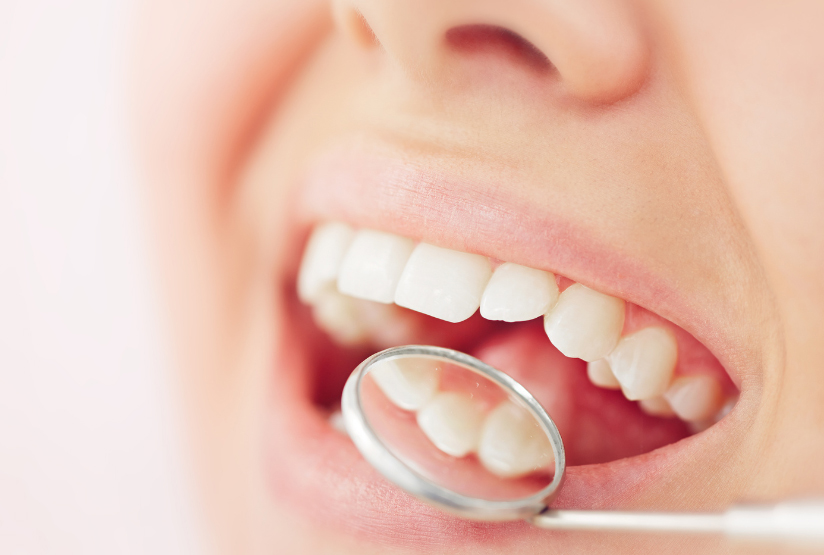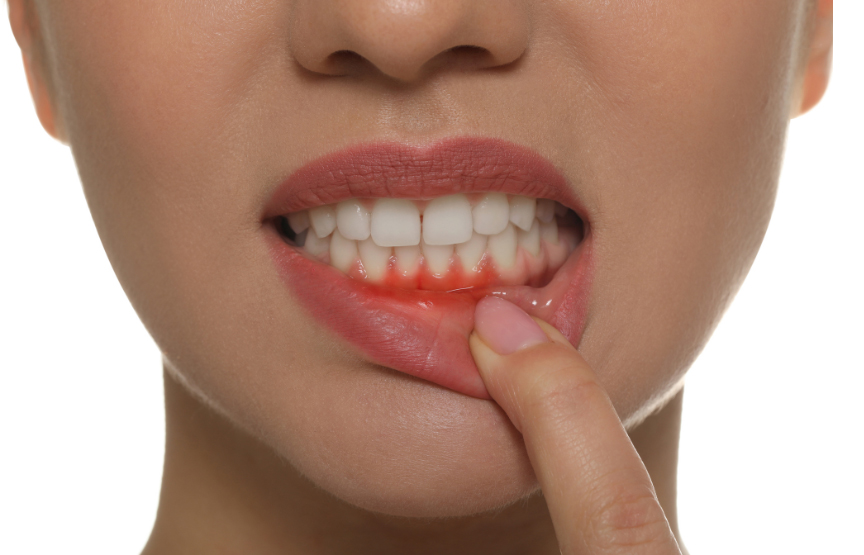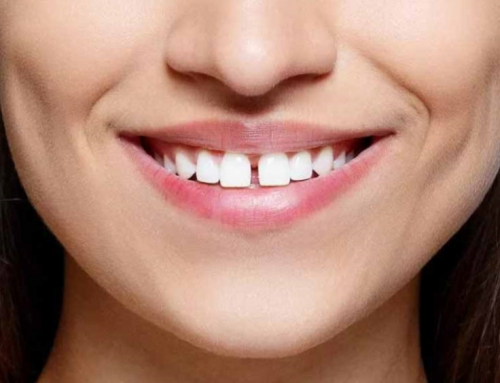10 Most Common Dental Problems Affecting Your Oral Health

Certain conditions can take a significant toll on oral and overall health. From bad breath and tooth decay to tooth sensitivity, gum disease, and more, this post will identify some of the most likely causes of oral health concerns.
Explaining some of the underlying causes of these common dental problems can help identify when to seek medical intervention and when simple changes like engaging in regular dental checkups can resolve some of the most pressing teeth problems.
Here are 10 common dental problems affecting your oral health:
1. Bad Breath

Halitosis, or bad breath, is a relatively common and embarrassing dental problem—especially in social or professional settings. But more than that, bad breath could be the tip of the oral health iceberg: researchers have discovered that around 85% of people suffering from bad breath also have other dental problems.
Some of the most common culprits include cavities and different types of gum disease. On other occasions, you may be able to attribute halitosis to the foods you’ve eaten recently, especially if they included onions, spices, liquor, and/or garlic.
Prescribed or over-the-counter medications may also contribute to halitosis. Allergy and cold medicines tend to dry out the mouth, often creating an unpleasant odor. Also, blood pressure medications, diuretics, anti-anxiety prescriptions, and even certain oral acne medications can lead to dry mouth and bad breath.
In some cases, bad breath is a side effect of other medical conditions. Chronic throat, nose, or sinus infections can cause halitosis, as can persistent acid reflux. In young children, halitosis could even be a sign that they’ve put food in their nostrils–and left it there!
Still, the most common cause of halitosis is the mix of living things inside the mouth. Because, as it turns out, bacteria on the tongue or elsewhere in the mouth is most likely to give you bad breath. In fact, some suggest around 90% of bad breath comes from the tongue. As a result, giving the tongue a good scrubbing during brushing can significantly reduce mouth odor. If it doesn’t, mention this concern at the regular dental checkups, and be sure to discuss current medications along with any underlying medical conditions.
2. Oral Cancer
Cases of this deadly condition have decreased in recent years, yet this form of cancer is still a severe potential dental problem, particularly among those with HPV. While its growth rate over the last decade has been less than 1% in America, it’s been 32% in the U.K. Experts believe that in addition to HPV, eCigs, and vaping can contribute to oral cancer risk, as can poor dietary choices and alcohol consumption.
If oral cancer is not caught early or spreads to other areas of the mouth, the survival rate after five years is 67%, which is high for cancer and generally not a good prognosis.
Initially, cancer shows as a small, soft, pinkish growth in the mouth. The sore may be challenging to detect since the mouth is almost always pink or reddish. But dentists are trained to identify abnormalities, which is why it is essential to maintain regular dental checkups to identify any potential oral irregularities. They know what to look for and when to recommend further testing.
3. Tooth Decay
Cavities (tooth decay) are the most common dental problem in the United States. In fact, with half the world impacted by cavities, it’s the most prevalent of all medical conditions, including ones outside of oral health. Cavities start when plaque combines with sugars or the starch generated by eating food. The decay-inducing cocktail generates an intense acid that attacks the tooth enamel.
Once enamel wears away, the plaque’s bacteria and acids start burrowing deeper into the tooth, moving from layer to layer. Eventually, they move to the pulpy core of the tooth with its blood vessels and nerve endings. But because there’s no place for the swelling to continue, the nerves get pressed down and cause constant pain.
Cavities do not only impact candy-eating children. In fact, 25% of grown adults aged 20 to 64 currently have at least one cavity, in addition to the overlapping 90% of adults who have already had at least one cavity in their lifetime.
Enamel erosion from aging can also cause tooth decay. The simplest way to prevent tooth decay is to brush your teeth daily, preferably after every meal. Focus on eating healthy foods and avoiding sugar since it can accelerate the formation of enamel-attacking acids. Regular dental checkups are also important.
4. Tooth Sensitivity
Tooth sensitivity means that brushing, eating, and even drinking can cause brief, sharp tooth pain. Some causes of this common dental problem are worn-down enamel and exposed roots, but others might include cavities, cracks, chips, gum diseases, or a filling that’s worn down over time. Tooth sensitivity can accelerate other dental problems because someone with this issue might be reluctant to brush their teeth.
Getting regular dental checkups can help identify and address any underlying causes. People with sensitive teeth may benefit from desensitizing toothpaste to help block pain or fluoride to strengthen tooth enamel. If the source of the sensitivity is exposed roots, a gum graft may improve the condition. In some cases, a root canal can also improve sensitivity if the underlying concern is an infected and/or swollen root.
5. Periodontal Disease

Periodontal disease, also known as gum disease, is an infection in the gums surrounding the teeth. In its earliest stages, it’s known as gingivitis: the gums become red, swollen, and may bleed. Unchecked gum disease can result in the loss of teeth as the gums pull away. This more advanced disease stage is called periodontitis. Although it cannot be reversed, it can be managed with brushing, medication, and sometimes surgical intervention.
Some significant gum disease symptoms include bad breath, sensitive teeth, bleeding gums, and painful chewing.
Everybody is at risk of being affected by periodontal disease; it can be of a hereditary dental problem, but not always. More than 47% of adults over 30 have some form of gum disease, and 70.1% of adults over 65 are impacted. Additional risk factors include stress, smoking, diabetes, genetics, defective fillings, and hormonal changes. The best layer of defense against this common problem is to floss every day and go to regular dental checkups.
6. Receding Gums
Sometimes receding gums are not caused by an underlying infection but by other factors like smoking, poor oral hygiene, and even high blood pressure. Receding gums can lead to other oral health problems since they expose teeth’s delicate, most vulnerable parts. Receding gums also increase the chances of losing teeth since they can affect bone strength.
Receding gums may be genetic and are considered one of the hereditary dental problems. Brushing your teeth too hard can also cause the gums to recede. Unfortunately, gum tissue does not grow back; once it’s gone, it’s gone. Still, gum recession isn’t irreversible–a periodontist can perform a gum graft procedure, taking some tissue from the palate and moving it to the recessed area.
Other ways of treating this condition include using antimicrobial mouth rinses or taking antibiotics which reduce inflammation and block collagenase (a connective tissue destroying protein). It’s also crucial not to brush too hard—a toothbrush with soft bristles and/or an electric toothbrush can prevent further recession. And as with everything else, good oral health and dental hygiene are the best preventative measures.
7. Dry Mouth
Dry mouth is when the mouth’s salivary glands don’t make enough saliva to keep themselves moist. That’s important because saliva helps prevent tooth decay by neutralizing the acids from mouth bacteria and by washing away food particles that could feed bacterial growth.
Even though many people believe that dry mouth is just part of growing older, the reality is that this condition can affect anybody. However, it is more common among the elderly 30% of adults over the age of 65 years have Xerostomia (the official name for dry mouth).
Major causes of dry mouth include salivary gland diseases, nerve damage, side effects from medications, and cancer treatment. Some typical remedies include staying hydrated, avoiding alcohol-based mouthwashes, cutting out caffeine and alcohol, and sucking on sugarless candy like a lozenge. More serious treatments include medications and sometimes laxatives, which draw moisture into the mouth just as they do with the intestines. Research shows that cancer-treatment-induced dry mouth can be mitigated with acupuncture.
8. Root Infection
The root of the tooth is a chamber of pulp and blood vessels that feed the tooth with nutrients. It also contains nerves to help detect temperatures. Tooth decay, leaky fillings, and tooth trauma can lead to an infection of this root space. Bad breath, fever, swelling of the gums, pain while chewing, and consistent throbbing are signs of an infected root.
An infection of a tooth root is often attributed to a tooth abscess—a pocket of pus that forms due to a bacterial infection. One imminent danger is that the infection can spread and compromise other body areas. To prevent that, the body forms a sac around the abscess, which creates the painful pressure.
A root canal procedure creates a channel to access the interior of the tooth, remove infected tissue, flush, and clean the area. The root is filled with a sealing material. In cases where the tooth is also damaged, a post could be implanted to hold a replacement crown. Although a root canal is one of the most dreaded dental procedures, about 25 million root canal treatments are performed annually, which means 41,000 per day. Don’t worry; the pain is shared by others experiencing this common dental problem (and actually, it’s most likely painless since an anesthetic is used during root canal treatment).
9. Enamel Erosion
Enamel erosion is a slowly unfolding dental issue that can take years to occur. As it happens, teeth become increasingly discolored. Enamel erosion is a chemical process that does not involve bacteria but rather acidic substances. Interestingly, some foods that are good for overall health are bad for the enamel since oranges, grapefruits, and lemons are high in Vitamin C but also in acids. Other culprits include soda and candy.
Brushing teeth too vigorously can also cause the enamel to erode over time, just as it may trigger gum recession. The end result of enamel erosion (whether it occurs through food and/or brushing practices) is that teeth become more susceptive to cracks, chips, and cupping—small indentations on the chewing surface.
Damaged enamel cannot be restored, but its worsening can be slowed down by improving the mineral content of the remaining enamel. A toothpaste can support this process. In some cases, the dental resin may be applied to the tooth. Some studies suggest that certain foods like milk or fluoride-rich foods like grapes and spinach can also strengthen the remaining enamel.
10. Broken or Cracked Teeth
Broken or cracked teeth are common dental problems that develop for several reasons. One is a traumatic injury, such as bumping into a hard surface or biting down on something too hard. Another common contributing issue is teeth grinding. Approximately 10% of the population suffers from Bruxism, or grinding of teeth while sleeping. That can result in a sore jaw in the morning and more severe teeth injuries.
The worst mistake to make when suffering from a broken tooth is to assume it will heal by itself. Instead, it’s critical to visit the dentist immediately for an examination and to find a lasting solution.
One option for fixing broken or cracked teeth is composite bonding, which can last up to ten years. Another is using a dental crown or porcelain veneers—sort of caps—to restore the appearance and function of the tooth. If the crack or damage extends into the gum line, an implant might need to replace the entire tooth.
Common Dental Problems: Final Takeaways
It’s easy to prevent many common or even hereditary dental problems by focusing on oral health. Just as people can spend hours in the gym transforming their bodies, it’s possible to avoid tooth problems by concentrating similarly on dental health. And it takes far less time! The American Dental Association suggests that brushing at least two minutes two times a day can yield many lasting benefits (imagine if that was all it took to get a sculpted body).
In addition to proactive measures, preventative maintenance is also needed. Maintaining oral health starts by avoiding foods and drinks that can result in tooth decay, such as candy, soda, and sugary foods. And sugar is in many more foods than just desserts. While it’s okay to have these foods as a treat, having them too frequently is bad for oral (and overall) health.
Anytime teeth problems pop up, it is important to seek guidance from a dentist. Regular dental checkups will help identify causes for concern so that it’s possible to take the necessary measures to stop them.
Note that hereditary dental problems, such as gum disease, can run in families. Awareness of these genealogical oral health issues can help prevent some of them from becoming problematic.
Are you suffering from a common dental problem limiting you from reaching your full potential in life? Comment below!






Leave A Comment